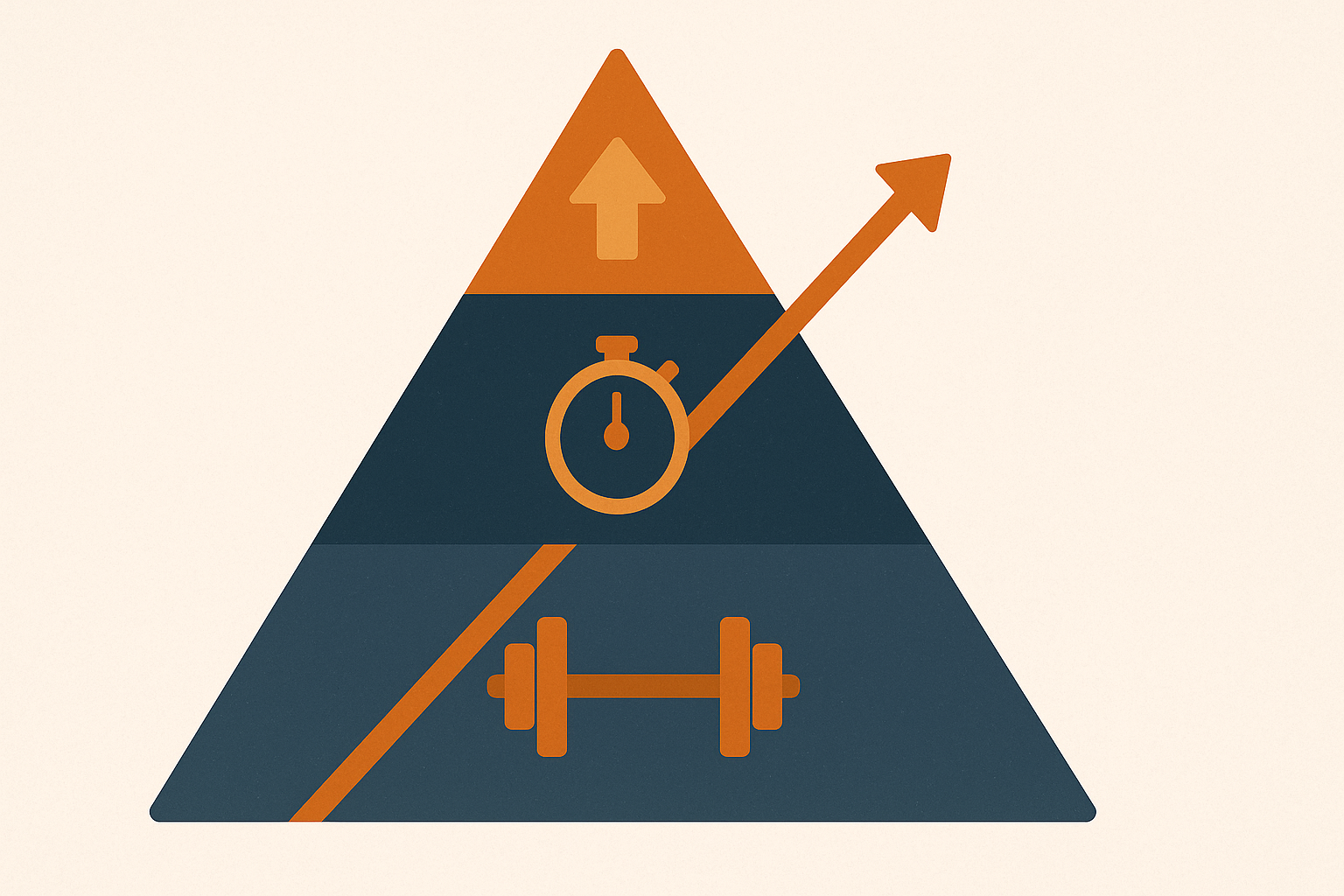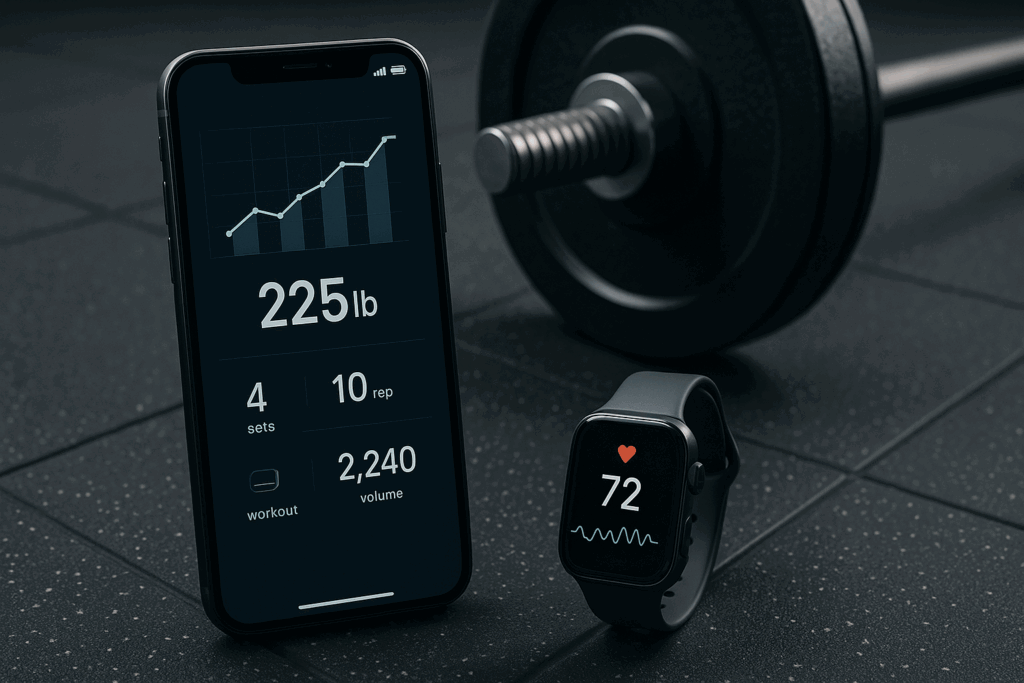Introduction: Embracing Your Ten Week Workout Plan for Transformational Strength
Embarking on a ten week workout plan marks the beginning of an intentional journey toward maximizing muscular power, structural resilience, and overall functional fitness. From the moment you initiate this regimented protocol, you commit to deliberate progression, strategically calibrated exercise selection, and a supportive nutritional framework designed to fuel each phase of your training. This ten week workout plan integrates periodized strength cycles, scientifically grounded recovery strategies, and holistic lifestyle considerations that coalesce into a cohesive path to powerful strength gains. By understanding the underlying principles of progressive overload, neuromuscular adaptation, and hormonal balance, you position yourself to harness every ounce of effort and translate it into tangible improvement. Throughout these weeks, you will cultivate not only physical prowess but also psychological resilience, forging the mental fortitude required to sustain high-intensity efforts and surmount plateaus.
You may also like: The Ultimate 30-Day Workout Plan for Men Working Out in the Gym: Proven Full Body Strength Exercises to Maximize Results
Understanding the Foundations of a Ten Week Workout Plan
Before diving into the specifics of exercise selection and nutritional protocols, it is essential to grasp the foundational concepts that underpin an effective ten week workout plan. Periodization, the systematic manipulation of training variables such as volume, intensity, and frequency, forms the backbone of sustainable progress. By structuring your ten week workout plan into distinct phases—accumulation, intensification, and realization—you ensure that each phase builds upon the last, fostering incremental adaptations rather than abrupt shocks to the system. Equally important is the principle of specificity: exercises must mirror the demands of your strength goals, whether that be maximal force production in a squat, explosive power in a deadlift, or sustained tension in an overhead press. Neuromuscular efficiency, the capacity of your nervous system to recruit muscle fibers effectively, is honed through consistent practice of compound movements with precise technique. Moreover, hormonal modulation—particularly the elevation of anabolic hormones like testosterone and growth hormone—can be accentuated through strategic training modalities such as moderate to high volume schemes, short rest intervals, and occasional metabolic stress techniques. Finally, the role of recovery cannot be overstated; sleep quality, mobility work, and active regeneration protocols like contrast showers or myofascial release all contribute to the readiness of your body for successive workouts.

Designing Your Ten Week Workout Plan for Strength
Crafting a ten week workout plan that yields powerful strength gains requires meticulous attention to exercise order, weekly frequency, and intensity distribution. In the initial three weeks—termed the accumulation phase—emphasis lies on establishing a robust training foundation through moderate loads (65–75% of one-rep max) and higher repetition ranges (8–12 reps). This stage conditions connective tissues, familiarizes the central nervous system with movement patterns, and fosters muscular hypertrophy that primes subsequent strength work. Transitioning into weeks four through six, the intensification phase calls for heavier loads (75–85% of one-rep max) with moderate repetitions (4–8 reps), thereby shifting the adaptive emphasis toward maximal force output. Here, the employment of compound lifts such as barbell squats, conventional deadlifts, bench presses, and overhead presses anchors each training session. By the final four weeks—the realization phase—load intensities escalate further (85–95% of one-rep max) with lower repetitions (1–5 reps) and extended rest periods (3–5 minutes) to maximize neural drive and intramuscular coordination. Throughout this progression, accessory exercises targeting antagonistic muscle groups and stabilizers—such as Romanian deadlifts for posterior chain reinforcement or face pulls for shoulder girdle balance—buffer injury risk and optimize kinetic chain integrity.

Integrating a 10 Week Fitness Plan Mindset for Long-Term Success
Adopting a 10 week fitness plan mindset involves more than following prescribed workouts; it necessitates cultivating discipline, accountability, and adaptability. Each week within your ten week workout plan should incorporate deliberate goal-setting rituals: reassessing your one-rep max estimates, evaluating movement quality, and identifying recovery benchmarks like resting heart rate variability or subjective fatigue scores. Journaling your training sessions fosters reflective practice, enabling you to discern patterns of stagnation or overreaching before they derail progress. Cultivating psychological resilience through techniques such as visualization, self-talk, and incremental milestone celebrations keeps motivation high, especially as fatigue accumulates during the intensification and realization phases. Moreover, engaging with a community—whether a training partner, coach, or online forum—provides external accountability and diverse perspectives on technique refinement. Flexibility remains paramount: if an unexpected schedule conflict arises or a minor injury surfaces, your ten week workout plan must accommodate autoregulation strategies such as reducing load by 10–15% or substituting a high-impact movement with a lower-impact alternative. This adaptive approach ensures continuity and resilience across the entire ten weeks.
Nutrition Strategies Aligned with Your Ten Week Workout Plan
Nutrition serves as the engine driving muscular repair, hypertrophy, and energy availability throughout your ten week workout plan. A balanced macronutrient distribution—approximately 1.6–2.2 grams of protein per kilogram of bodyweight, 20–30% of calories from healthy fats, and the remainder from complex carbohydrates—supports both strength adaptation and hormonal health. During the accumulation phase, a slight caloric surplus (200–300 calories above maintenance) facilitates muscle growth and connective tissue fortification, while in the intensification and realization phases, maintaining maintenance-level calories prevents unnecessary fat gain as load intensities rise. Timing also plays a crucial role: consuming a blend of protein and carbohydrates within two hours post-workout accelerates muscle protein synthesis and glycogen replenishment, setting the stage for optimal performance in subsequent sessions. Micronutrients such as zinc, magnesium, and vitamin D support endocrine function, while antioxidants from colorful fruits and vegetables mitigate exercise-induced oxidative stress. Additionally, omega-3 fatty acids can attenuate inflammation, improving recovery rates without blunting the adaptive processes of training. Hydration protocols—aiming for at least 35 milliliters of water per kilogram of bodyweight daily—ensure plasma volume sufficiency and temperature regulation during high-intensity efforts.

Monitoring Progress: Tracking Metrics in Your Ten Week Workout Plan
To ensure that your ten week workout plan yields the intended strength adaptations, systematic progress monitoring is essential. Objective metrics such as one-rep max retests at the conclusion of each phase provide clear indicators of neuromuscular improvements. However, everyday feedback mechanisms like Velocity-Based Training (VBT) devices can offer granular insights into barbell speed and fatigue levels within sessions. Subjective measures—perceived exertion ratings, mood states, and sleep quality assessments—round out this data set, highlighting non-performance factors that influence readiness. Implementing regular ultrasound or tape measurements of muscle girth at standardized anatomical landmarks captures hypertrophic responses, while bioelectrical impedance or dual-energy X-ray absorptiometry (DXA) scans offer body composition context. Importantly, avoid overreliance on any single metric; rather, interpret trends across multiple data points to guide autoregulatory adjustments. For instance, if VBT outputs diminish by more than 10% over successive workouts, this signals a need for additional recovery or load modulation within your ten week workout plan.

Implementing a 10 Week Weight Loss Program Component
Although the primary goal of a ten week workout plan focuses on strength, practitioners seeking concurrent fat reduction can integrate a 10 week weight loss program component by modulating nutritional strategies and training modalities. Incorporating two to three weekly high-intensity interval training (HIIT) sessions—lasting 10–15 minutes each—into your ten week workout plan stimulates metabolic rate without significantly compromising recovery from strength work. Structuring these cardio sessions after resistance training or on separate days ensures that strength performance remains the priority. Nutritional adjustments involve creating a moderate caloric deficit (10–15% below maintenance) while preserving high protein intake to mitigate lean mass loss. Strategic use of nutrient timing—placing carbohydrate intake around training windows—sustains workout intensity, while reducing carbohydrates later in the day facilitates fat oxidation during rest. Additionally, incorporating non-exercise activity thermogenesis (NEAT) through daily walks or dynamic stretching breaks elevates overall energy expenditure without taxing recovery. This balanced approach allows individuals to pursue a 10 week weight loss program integrated seamlessly within the overarching ten week workout plan.
Balancing Recovery and Adaptation in a Ten Week Workout Plan
Recovery management stands as the linchpin of any successful ten week workout plan, dictating the extent to which training stimuli convert into strength gains rather than fatigue accumulation. Sleep hygiene practices—aiming for 7.5–9 hours nightly—optimize growth hormone release and cognitive restoration. In-session recovery tactics, including foam rolling, targeted mobility drills, and intra-set stretching, facilitate efficient blood flow and reduce neuromuscular tension. Deload weeks, strategically placed at the transition between the intensification and realization phases or after cumulative microcycles, involve reducing volume by 40–60% while maintaining intensity, thereby preserving neural adaptations without exacerbating fatigue. Cold water immersion, contrast showers, and pneumatic compression devices have demonstrated efficacy in mitigating muscle soreness, although individual responses vary; practitioners should experiment with modalities to identify personal preferences that complement their ten week workout plan. Importantly, psychological recovery—engaging in mindfulness, breathing exercises, or leisure activities—recharges motivational reserves that underpin consistent adherence.

Adapting Your Ten Week Workout Plan to Individual Needs
No two trainees possess identical physiological profiles, lifestyle constraints, or injury histories; thus, your ten week workout plan must remain sufficiently malleable to accommodate personal variables. Individuals with pronounced muscle imbalances might benefit from incorporating unilateral exercises—such as Bulgarian split squats or single-arm dumbbell presses—within the accessory framework. Those recovering from tendinopathies can implement tempo variations (e.g., 3-second eccentric phases) to enhance tendon resilience without overloading maximal contractions prematurely. Additionally, trainees operating under tight schedules can leverage time-efficient superset structures—pairing antagonistic muscle groups or coupling heavy compound movements with lighter accessory work—to preserve training density without compromising progression. For individuals with specific sport demands, the ten week workout plan can be tailored with explosive or plyometric variants in the realization phase, thereby translating newfound strength into athletic-specific power outputs. These nuanced modifications ensure that your ten week workout plan not only drives general strength improvements but also aligns with personal objectives and constraints.
Navigating Plateaus: Strategies to Overcome Stagnation
Encountering plateaus during a ten week workout plan presents both a challenge and an opportunity to refine your approach. When lifts stagnate, consider introducing cluster sets—performing multiple mini-sets with brief intra-cluster rests—to sustain high force outputs over extended total volume. Alternatively, implementing wave loading—cycling intensities within a session (e.g., 80% × 3 reps, 85% × 2 reps, 90% × 1 rep)—stimulates neuromuscular adaptations by varying recruitment thresholds. Changing grip widths, stance variations, or bar types (e.g., safety squat bar or trap bar) can elicit novel stimulus patterns and rekindle progress. In cases where psychological barriers emerge, guided visualization of successful lifts, pre-competition mock attempts, or training under the supervision of a coach can restore confidence. Finally, re-evaluating nutritional and recovery factors ensures that unseen deficits—undereating, micronutrient insufficiencies, or chronic sleep deprivation—are addressed to unlock further gains within your ten week workout plan.
Integrating Mobility and Stability Work
A potent ten week workout plan acknowledges that maximal strength thrives atop a foundation of joint mobility and muscular stability. Dynamic mobility drills—such as hip CARs (Controlled Articular Rotations) and thoracic spine windmills—should be performed as part of the warm-up to enhance movement quality and reduce injury risk. Between working sets, isometric stability holds (e.g., paused front squats or plank variations) reinforce core integrity and intermuscular coordination. Incorporating unloaded accessory movements—banded shoulder dislocations or ankle dorsiflexion stretches—promotes joint health without encroaching on recovery budgets. Furthermore, addressing fascial adhesions through instrument-assisted soft tissue mobilization can improve tissue pliability, facilitating deeper ranges of motion during loaded exercises. By weaving these components into your ten week workout plan, you ensure that strength gains translate into functional capacity rather than imbalanced movement patterns.

Leveraging Technology to Optimize Your Ten Week Workout Plan
Modern strength coaches and athletes alike can harness an array of technological tools to refine and personalize their ten week workout plan. Wearable devices equipped with accelerometers and gyroscopes quantify velocity, acceleration, and power outputs during lifts, enabling real-time feedback and data-driven load adjustments. Mobile applications facilitate automated workout logging, rest timers, and one-rep max estimators, freeing cognitive bandwidth for technique focus. Virtual coaching platforms empower remote collaboration with certified strength professionals, while online forums and video analysis tools democratize access to peer feedback. Nutritional tracking apps that sync with digital food scales offer precise macronutrient monitoring, ensuring adherence to the caloric targets prescribed for muscle hypertrophy or fat loss phases. By integrating these technologies judiciously, you cultivate an evidence-based ten week workout plan that adapts dynamically to your evolving performance profile.

Enhancing Mind-Muscle Connection
The efficacy of any ten week workout plan depends not only on external load parameters but also on the internal focus and neurological engagement you bring to each repetition. Cultivating a strong mind-muscle connection involves deliberate attentional focus on the working muscle throughout concentric and eccentric phases. Pre-activation techniques—such as brief isometric holds or low-load isolation sets—prime the target musculature and reinforce kinesthetic awareness. Incorporating tactile feedback, whether via light tapping or coached verbal cues, can heighten proprioceptive sensitivity and reduce compensatory recruitment patterns. Additionally, employing pauses at peak contraction points cultivates muscular tension and amplifies metabolic stress, further enhancing hypertrophic signaling pathways. As your ten week workout plan progresses, sharpening this neural-muscular synergy accelerates strength consolidation and elevates the quality of each training session.
Transitioning Beyond Ten Weeks: Sustaining Strength Gains
Completing a ten week workout plan catalyzes profound physiological adaptations, but sustaining these gains requires strategic planning for the subsequent training cycles. An active transition phase—a period of reduced intensity and diversified training modalities lasting one to two weeks—allows the central nervous system and connective tissues to recover fully. During this phase, emphasizing alternative movement patterns such as kettlebell swings, gymnastics-based ring work, or swimming can preserve general conditioning while granting respite from heavy barbell stress. Afterward, establishing a new macrocycle—whether another ten week workout plan, a hypertrophy-focused block, or a sport-specific peaking strategy—ensures continuous progression and long-term adherence. Periodic de-loading, cross-training, and goal re-calibration form the backbone of a sustainable strength journey that extends well beyond this initial ten week workout plan.
Frequently Asked Questions
1. How can I transition from a 10 week workout plan to a new training cycle?
After completing a 10 week workout plan, transitioning to a new training cycle involves establishing a conditional deload phase followed by a microcycle–intensification hybrid. During the initial week, you might reduce overall volume by roughly 30 percent while maintaining similar intensities on primary lifts, thereby retaining neuromuscular adaptations from the prior cycle. In practice, you can adapt concepts from your 10 week fitness plan by introducing alternative compound variations—such as trap-bar deadlifts or close-grip bench presses—to target secondary muscle groups while giving the central joints a brief respite. It’s also prudent to implement autoregulation strategies such as RPE-guided loading, which allows you to adjust daily intensities based on readiness without discarding the momentum built over ten weeks. Integrating contrast-loading methods—alternating heavy sets with lighter, speed-focused repetitions—can further enhance muscle-fiber recruitment while yielding an invigorating change of stimulus. This strategic shift not only preserves the strength gains from your 10 week workout plan but also sets the stage for subsequent hypertrophy or power phases.
2. How do nutrition priorities shift when pursuing strength and fat loss simultaneously?
Many trainees wonder how to juggle muscle growth and body fat reduction within a 10 week weight loss program without undermining either goal. When you aim to pursue strength development concurrently with fat reduction, nutrition becomes both a fueling and a regulatory tool rather than simply a recovery mechanism. In a 10 week weight loss program context, cyclic carbohydrate intake—often referred to as carb cycling—ensures that you maintain sufficient glycogen reserves on heavy lifting days while cultivating an overall caloric deficit over the week. This approach contrasts with a standard 10 week workout plan that prioritizes caloric surplus, because here you must balance anabolic signaling with lipolytic stimulus. Adequate protein distribution throughout the day, complemented by targeted leucine-rich sources around training sessions, fortifies muscle protein synthesis even under a mild deficit. Monitoring your metabolic markers and adjusting micronutrient timing can help attenuate the energy dips typically observed midway through the program. Tracking your protein-to-calorie ratio helps maintain the nutritional balance needed for a successful 10 week weight loss. Lastly, integrating periodic refeeds—short-term caloric increases every 10 to 14 days—can reset key hormones like leptin and optimize training quality as the program progresses.
3. How do I customize a ten week workout plan for individual goals?
Customizing a ten week workout plan begins with profiling your unique recovery capacity, injury history, and movement preferences to select the optimal frequency and volume for each muscle group. For instance, an athlete prone to lower-back strain might swap conventional deadlifts for rack pulls with a reduced range of motion, preserving posterior chain strength without aggravating pre-existing issues. Advanced techniques such as cluster sets or German Volume Training can be scaled to fit your schedule, whether you have access to a full gym or minimal equipment at home. Furthermore, structuring deload microcycles based on real-time readiness indicators—like heart rate variability or subjective energy scores—ensures that you neither undertrain nor overreach as the ten week workout plan progresses. Incorporating personalized mobility sequences and soft-tissue protocols tailored to your biomechanics also minimizes downtime from nagging discomfort and amplifies the quality of each session. By iterating these parameters across the cycle, you transform a generic template into a bespoke roadmap that aligns with your goals and constraints.
4. What role do wearable metrics play in optimizing a 10 week fitness plan?
Wearable devices have evolved beyond simple step counters to deliver bar-speed data, heart rate variability, and even muscle oxygenation measurements, all of which can refine your training stimulus within a 10 week fitness plan. By tracking velocity loss on compound lifts, you can objectively gauge neuromuscular fatigue and determine when to terminate a set to preserve power output. Continuous heart rate variability monitoring offers an early warning system for excessive systemic stress, enabling you to adjust next-day intensities or prioritize recovery modalities. Some advanced wearables also estimate anaerobic threshold in real time, which can inform when to introduce metabolic-conditioning elements without compromising strength work. Integrating these data streams into a centralized app allows you to spot trends—such as drift in lifting velocity over weeks three to five—and proactively tweak microcycle volume. This empirical feedback loop transforms intuition into actionable insights, ensuring each session contributes optimally to your overall 10 week fitness plan.
5. How can mindfulness techniques enhance adherence to a 10 week weight loss program?
Mindfulness practice fosters a heightened awareness of hunger cues, emotional triggers, and habitual eating patterns that often undermine progress in a 10 week weight loss program. By dedicating ten minutes each morning to guided breathing or body-scan meditation, you cultivate the capacity to recognize stress-induced cravings before they escalate into unplanned caloric surges. This mental training complements the structural discipline of meal prepping and portion control by reinforcing deliberate food choices rather than reactive consumption. Incorporating brief grounding exercises—such as a five-minute walk focusing solely on environmental stimuli—can further disrupt automatic behaviors like reaching for snacks during sedentary work. Over time, this mindful approach reduces the cognitive load associated with dieting, making adherence feel less like a chore and more like a sustainable lifestyle shift.
6. What novel metrics should be tracked during a 10 week weight loss phase to ensure lean mass retention?
Beyond traditional scales and circumference measurements, advanced coaches now deploy portable ultrasound devices to quantify muscle thickness at multiple sites, providing early indication of lean mass changes during a 10 week weight loss phase. Coupling this with continuous glucose monitoring reveals how individual carbohydrate sources impact insulin sensitivity and subsequent workout performance under a caloric deficit. Blood spot testing for markers like creatine kinase and cortisol can alert you to excessive muscle breakdown before it manifests in performance drops. Even simple assessments—such as measuring handgrip strength at the same time of day each week—offer a surprisingly sensitive window into overall neuromuscular health. By triangulating these diverse metrics, you safeguard against the common pitfall of regaining fat instead of muscle when shifting from a ten week weight loss focus back to maintenance or strength phases.
7. What are common mistakes to avoid in a ten week workout plan?
One frequent misstep in a ten week workout plan is neglecting joint-specific mobility work in favor of pure load progression, which can lead to restrictive movement patterns and overuse injuries. Mindlessly chasing new personal records each week without deloading phases often culminates in neural burnout rather than sustainable strength. Another error involves copying elite athlete templates without accounting for individual recovery thresholds, resulting in chronically elevated cortisol and dampened anabolic signaling. Overemphasis on accessory isolation exercises at the expense of compound lifts can also dilute the potent systemic stimulus needed for full-body adaptation. Lastly, dismissing early warning signs—such as disrupted sleep or persistent soreness—undermines long-term consistency and compromises the very gains you set out to achieve.
8. How should I modify rest protocols within a 10 week fitness plan to optimize recovery?
Optimizing rest within a 10 week fitness plan goes beyond simply lengthening inter-set pauses; it involves periodizing active and passive recovery modalities alongside training intensity. During heavy lift days, consider implementing micro-breaks between reps—pausing briefly at the midpoint of a concentric movement—to maintain bar speed without fully taxing the phosphagen system. On lighter days, integrate blood-flow restriction techniques with low loads to stimulate muscle protein synthesis without adding systemic fatigue. Scheduled nap windows of 20 to 30 minutes can boost afternoon training quality, particularly when evening sessions encroach on natural circadian rhythms. Contrast therapy methods—alternating hot and cold immersions—have also shown promise in accelerating return-to-baseline muscle soreness, allowing you to hit each workout fresh.
9. How can athletes integrate plyometrics into a 10 week workout plan for explosive power?
Integrating plyometrics into a 10 week workout plan requires balancing impact stress with foundational strength to ensure injury risk remains low. Early in the cycle, substitute low-intensity hops or medicine-ball throws for traditional accessories to pre-activate the stretch-shortening cycle without overwhelming connective tissues. As your strength base solidifies, gradually introduce depth jumps or bounding drills at the start of select sessions, ensuring adequate warm-up and joint preparation. Monitor mechanical output—using simple jump mats or inertial sensors—to track improvements in ground-contact time and peak power, allowing you to modulate plyometric volume precisely. Finally, schedule dedicated plyometric blocks during week eight or nine when neural readiness peaks, transforming raw force capacity developed in earlier phases into sport-specific explosiveness.
10. What innovative strategies can be used after a 10 week weight loss program to maintain results and prevent rebound?
Following a structured 10 week weight loss program, establishing a maintenance phase that emphasizes non-exercise activity thermogenesis (NEAT) can counteract the metabolic slowdown that often drives weight regain. Simple habit shifts—like standing meetings, walking commutes, or periodic stretch breaks—elevate daily caloric expenditure without interfering with gym recovery. Experimenting with probiotic-rich foods and prebiotic fibers has also shown promise in recalibrating the gut microbiome toward compositions that favor lean-body maintenance. Strategically reintroducing carbohydrates around high-intensity training days supports performance while minimizing storage on off-days, smoothing out hormonal fluctuations. Finally, periodic “diet breaks” of one to two weeks at maintenance calories can restore leptin levels and psychological resilience, making long-term adherence less daunting and more sustainable.
Conclusion: Cementing Your Strength Foundation Through a Ten Week Workout Plan
Culminating a structured ten week workout plan represents a milestone in your fitness evolution, but its true value lies in the durable foundation it builds for lifelong strength development. By meticulously integrating periodized training phases, nutrient timing protocols, recovery strategies, and individualized adaptations, you cultivate a resilient physique capable of sustained performance. The strategic embedding of a 10 week fitness plan mindset fosters discipline, accountability, and adaptability—traits that transcend the gym and benefit broader life domains. As you reflect on the progress achieved through this ten week workout plan, recognize that each rep, set, and measured nutritional choice contributed to a composite transformation of body and mind. Embrace the lessons learned, recommit to the principles that undergirded your success, and embark confidently into the next chapter of your strength journey, armed with the knowledge that well-designed protocols—and your unwavering dedication—forge powerful strength gains that endure.
Further Reading:
The Ultimate 10-Week Workout Plan: Lose Weight And Get Shredded With These Simple Exercises





